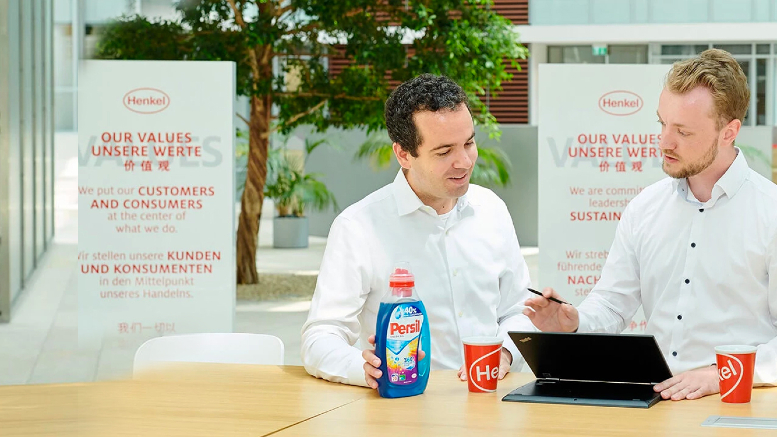How to Create the Workplace of the Future: 9 Steps You Can Take Right Now
août 3, 2021 / Weston Morris
The hybrid workplace presents new challenges and opportunities. This blog, based on the conclusions from a recent ISG report, addresses nine actions employers should take now to ensure the future success and mental wellbeing of their employees in the current and future workplace.
1. Map out your employee needs. Understand what employees need to be successful.
The way employees work will continue to evolve as new technologies yield new innovation. As an employer, you need to stay on top of this and rethink how you’ll manage productivity and connectivity in the future workplace, which will almost certainly be more mobile and more remote. You have to ask yourself, “How will you keep your employees engaged? How will they collaborate? What’s the best use of technology that’ll also promote a healthy work/life balance? Do they have the right tools for their job? Is their workplace ergonomic?” These are the key areas employers need to consider to make sure their employees have what they need to be successful.
2. Complete an end-to-end operational impact assessment to understand the hotspots that need attention within your organization and supply chains.
The full ISG report will guide you through how to assess your employees needs and translate that into actionable programs to improve work/life balance—as well as how to identify the required technology through independent market advice to improve organizational productivity. It’ll show you how to undertake a thorough employee assessment to identify worker types, the technologies they need and how they need to be supported. The goal is to link this into an end-to-end assessment and develop a clear road map of who needs what, and why. Even if you’ve done these assessments in the past, it is vital to do it again because you can no longer base decisions on pre-pandemic data.
3. Design your employee value proposition so that it provides more time for employees to manage their mental health.
A survey by CBRE shows that 69% of millennials would give up other work benefits for a more flexible working space. The ability to become more flexible and look after health is a definite trend in the modern workforce. A significant number of people say they place flexibility of work and their hours at the top of their mind, and over 40% say their mental health has declined since the pandemic started. Statistics like these necessarily impact the employee value proposition. This is an important consideration because health and safety at the home office will become a business office issue.
4. Embed digital technology into remote working. Provide the right tools and technologies to allow employees to work successfully.
Over 50% of employees who work remotely say their employer needs to invest in better technology because the current setup is not optimal. Also, when made to work at home, 37% of IT leaders surveyed agreed that employees did not have the right tools to enable the full ability to work at home when the transition was first made. This resulted in nearly 40% of employees having to partially or fully fund their own technology upgrades. This is an important consideration that can have legal implications.
5. Undertake and provide the right at-home equipment to prevent industrial accidents or worker compensation claims.
Among the issues of working from home is that employees are typically spending their own money to provide some of their at-home office equipment. Often, this equipment lacks ergonomic design, making it more likely to cause repetitive-motion injuries. Even using the kitchen table as a desk can cause back strain, eye strain and other physical issues. Some employers are encouraging employees to move their ergonomic office equipment into their home offices. Others are providing stipends to allow employees to buy items that meet a specified standard.
6. Check that you have not deployed monitoring software that will breach your country’s privacy laws and land you in hot water.
In recent years, software that monitors internet use, calendar use, and keyboard strokes has become more commonplace. Spot checks or active monitoring (for example, randomly scanning emails for keywords or phrases) can now be carried out using modern software. Used in the right way, along with sentiment analysis, this software can help organizations evaluate employees’ work experience. Monitoring in the home, however, is considered highly invasive. Legal viewpoints as quoted in the CIPD state that software that records videos or monitors audio is likely to cross the line of privacy that employees expect when working from home.
7. Begin an automation journey to support technology and conversational AI via natural language input.
AI assistants are not new. Nearly all of us have at least one IoT AI device in our home, which we control by voice alone. Two things come to mind here: First, they are open and not secure. Secondly, they are not frequently integrated into corporate operations, so they remain consumer tech. But the day is coming soon when AI augmentation will integrate into day-to-day corporate operations so employees can simply interact with AI using back-end automation, to complete mundane tasks. These increased efficiencies will result in small savings that can add up over time.
8. Investigate sentiment analysis and what it can tell you about your application estate and infrastructure.
Sentiment analysis enables organizations to automatically gain insights into employee work experience as they interact with the service desk, without requiring the employee to respond to frequent surveys. The organization can use the sentiment analysis to determine when the work experience dips and proactively respond with changes so as to improve experience – and thus improve productivity. The next generation of conversational AI will pick up employees’ pitch and tone to determine how annoyed or happy they are. This can then be used to cross reference health surveys that will become the norm in companies to provide personalized occupational support as well as fully automated technical support. These tools will mean that both person and machine will be less likely to suffer problems.
9. Plan for a change in work and culture. Otherwise, what is the point?
Studies show that when employees feel more pressured, their productivity gets worse, resulting in increased stress. From there, the cycle usually gets worse. This needs attention, and it’s exactly why organizations need to implement proper management of virtual teams using an approach that is properly structured with regard to working culture and performance management. It’s a better strategy than overzealous employee monitoring, which generally leads to a negative productivity cycle, and is also potentially illegal depending on where you are located.
Next Steps
For the future workplace to succeed, organizations must instill a culture that respects both the time and health of its remote workers. Understand that in order to thrive, companies need happy, healthy employees and highly effective and resilient IT that’s ready to survive the next major challenge. To start the process, do the following:
- Seek out and identify the key trends in your company’s own “future of work” plan, including the best technologies to ensure your organization is future-proofed.
- Undertake a thorough employee assessment to identify worker types, the technologies they need and how they need to be supported.
- Seek professional advice on understanding the sentiment of your organization.




















